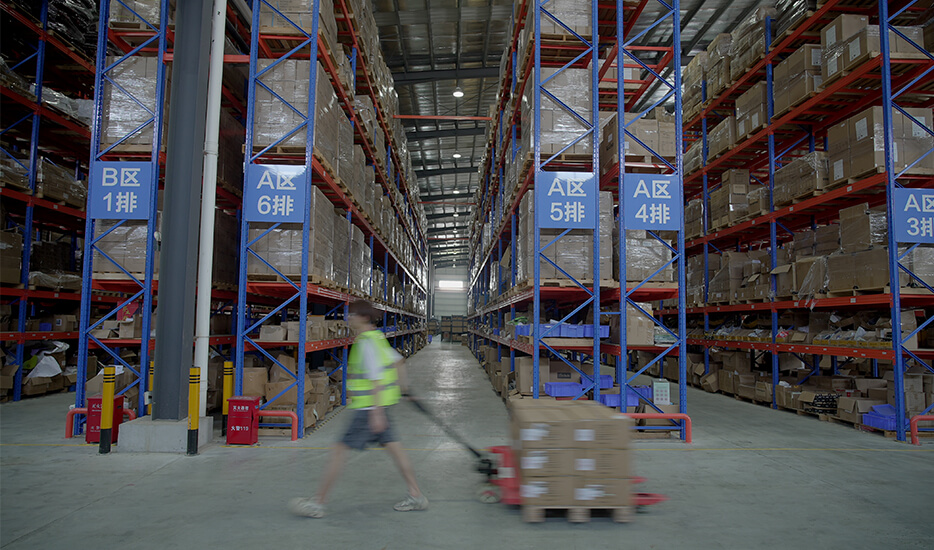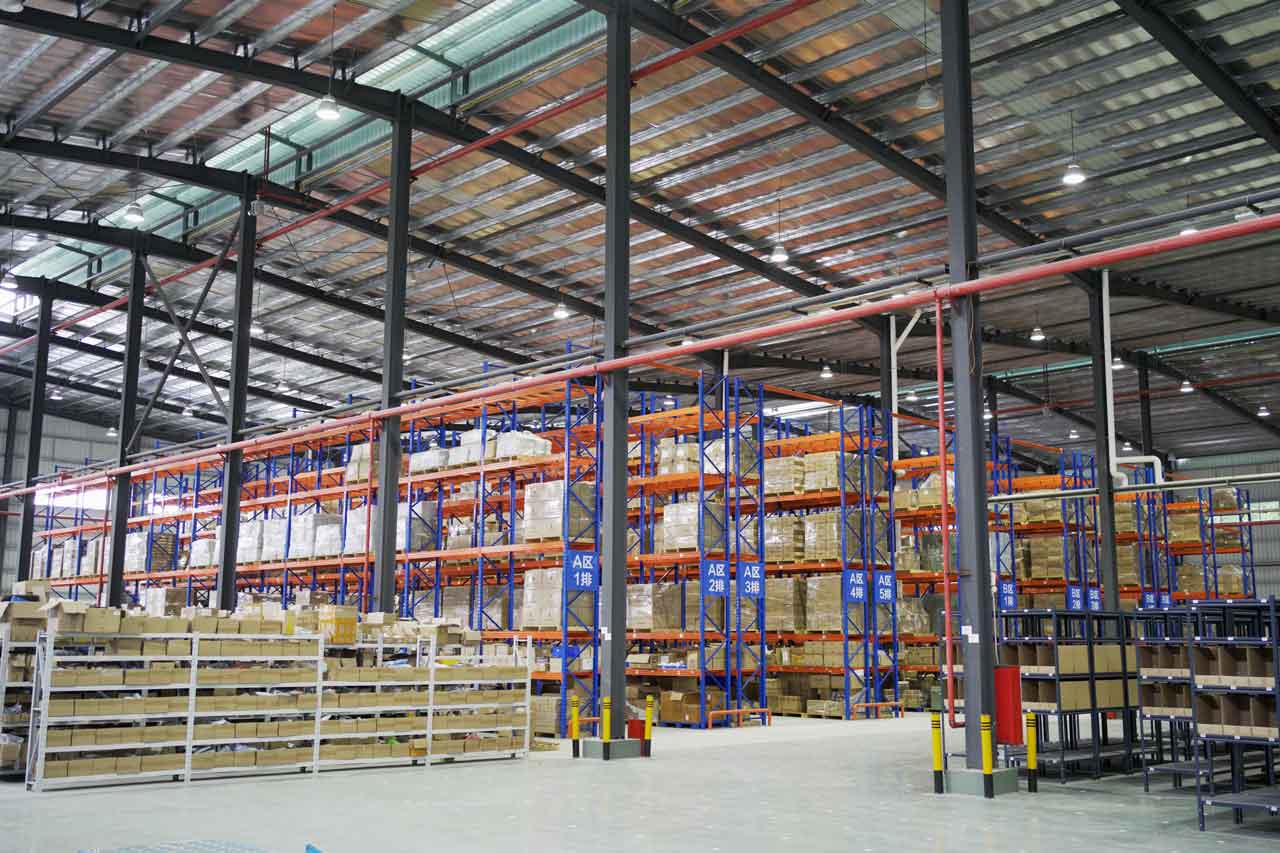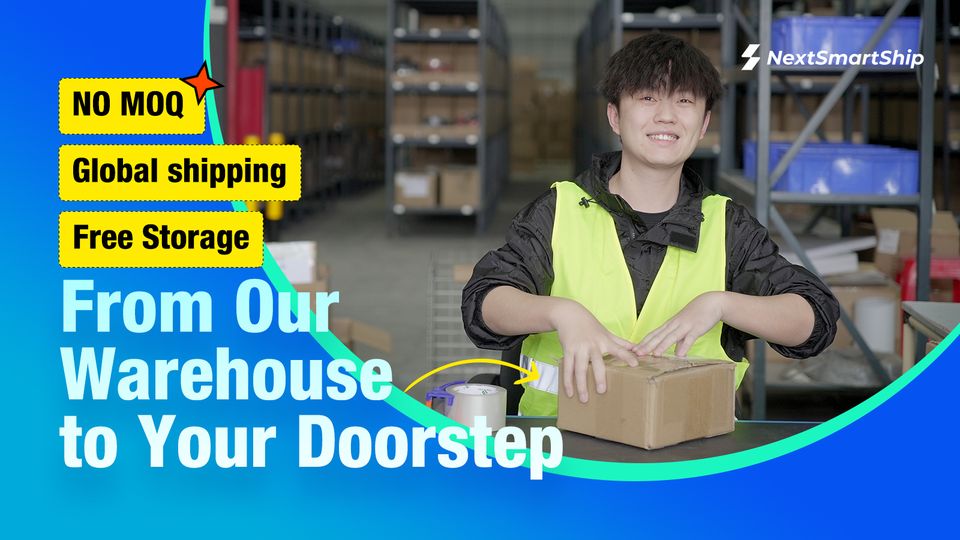If you’re an e-commerce seller, there may come a time when your business is growing beyond what you can handle. Whether you need a little extra space or a full-scale distribution center, finding the right warehouse is critical to your business’s success. But how much does it cost to rent or buy a warehouse, or if you’re expanding globally, how much does it cost to build a warehouse? While there’s no one-size-fits-all answer, you want to make sure they are on board with your company’s values and goals when considering a warehouse. Do they understand the importance of customer service? Things like this can make or break a business relationship. Your warehousing costs also depend on many factors, including where your warehouse is located, how much space you need, and what services or features you want. It would be best to consider whether it’s more cost-effective for you to manage your warehouse or use a third-party logistics (3PL) provider to do it for you.

The details and components involved in determining a warehouse cost
When looking to rent warehouse space, you need to determine a few key things before deciding whether it’s right for your business. Some of these factors are more obvious, such as the square footage you’ll need, while others are less apparent and can quickly add up. Knowing what goes into determining your warehouse costs is crucial to making an informed decision.
First, you want to consider the amount of space you need. If you’re starting, you may not need much warehouse space—you might even be able to get it by storing your inventory in a garage or a spare bedroom. If your business is multiplying and you see more orders than ever before, that’s different. You might need more warehouse space to keep up with customer demand.
Once you know how much space you need, the next step is to consider the rental rate. This is typically expressed as dollars per square foot per year. Depending on your warehouse location, rental rates can vary widely (they tend to be lower outside major cities). It’s essential to shop around and compare rates from several different warehouse providers before making any decisions.
The final component of warehouse costs is operating expenses. These are expenses that aren’t directly related to warehousing your inventory—for example, property taxes, property insurance, standard area maintenance costs (like cleaning or repair services), and utilities (such as electricity or water).
How is warehousing cost calculated?
Warehouses are typically rented on a monthly or yearly basis. The rental price may be based on your square footage, or it may be based on the size of your inventory. For example, if you sell small items, you may be able to pay by the number of items you store. On the other hand, if you have large inventory items, you may be charged for the storage space. When determining your total cost, two costs are added: rental rate and NNN/CAM charges.
The rental rate is the amount it costs you to rent the space itself but does not include any additional items like utilities or taxes. NNN/CAM charges represent other costs besides the rental rate (otherwise known as additional occupancy expenses). If a landlord includes utilities in their quoted price for warehouse space, it would be included in the NNN/CAM charges; otherwise, utilities would be an added expense on top of your rental rate and NNN/CAM charges.

How much does warehousing cost?
When you’re looking for warehouse space, you’ll be renting by square foot most of the time. But how do you know how much space you need? Start by asking what your storage needs are. Do you have palletized product that can be stacked to the ceiling? Or are you storing multiple products in different sizes and shapes? This will determine how much vertical and horizontal space you need.
It’s also important to consider where your inventory is coming from. If your product is being shipped and received on pallets, a loading dock may be necessary. If it comes in large containers, this may require extra space for container movement. Additionally, if your product requires specialized equipment like conveyors or cranes, then the construction of those systems must be considered when calculating your overall space requirements.
Understanding the costs of warehousing can be helpful when evaluating your company’s needs and budget. In general, there are three main components to consider:
- The amount of space you need
- The base warehouse rental cost per square foot
- Estimated operating expenses can vary by contract type
To figure out a ballpark number, use this equation:
(Rental Space x Warehouse Rental Cost) + Total Operating Expenses = Monthly Rate
Keep in mind these costs can vary widely depending on the warehouse provider you choose and the specific needs of your business. The size of your warehouse rental space and the location of your facility will affect the price you’ll pay. You may need to consider additional services. Operating costs vary depending on these items, but you should anticipate paying for water, electricity, janitorial services, and HVAC maintenance. The types of insurance required by a landlord will also be a factor.
An Example of Warehousing Cost Calculation
If you need to rent 10,000 square feet of warehouse space. This is the formula that’s involved:
- Space: 10,000 sq. feet
- Average base rental rate: $1.50 per square foot per month
- Estimating operating expenses (NNN): $0.50 per square foot per month
Base monthly rental rate + monthly estimated operating expenses = $2.00/sq. foot
Total monthly rent = 10,000 x $2.00
= $20,000
How to reduce warehousing cost
Warehousing is a vital component of any supply chain, but it can also be expensive. Here are some tips to reduce the cost of warehousing.
Reduce excess inventory
You can accomplish this by understanding your customers’ demands and ordering or producing products based on actual demand rather than forecasts. You may also want to look at how often you receive shipments from your suppliers (for example, if you order weekly and could order monthly, there’s no reason not to make that change).
Improve inventory flow
Items should have a set location in your warehouse and be moved logically (e.g., put the items you ship out most often closest to the shipping docks).
Evaluate your current warehouse space
Determine whether you need all of it or whether consolidation is possible. Could you move some of the less-used items offsite? Is it time for a smaller facility? Are you storing too many items that aren’t moving quickly enough? Could you use collapsible racks instead of permanent ones? Dive into the nitty-gritty here to find ways to improve efficiency.
Improve warehouse operation efficiency
Large online shopping platforms are efficient because their warehouse operations are incomparably accurate. The warehouse positioning system is the best companion. If it can operate accurately and efficiently, it can significantly save the time for searching, storing, and shipping, save labor time, prevent errors, and facilitate inventory.
Consider outsource E-commerce warehousing
Nowadays, the costs that enterprises need to invest in self-built warehousing include warehouse rental costs, personnel costs, equipment costs, etc. Especially for some novice merchants, if the warehousing and distribution efficiency is low, the error rate is high, and there is little order information in the off-peak season. Then the equipment, machinery and equipment, and labor are wasted, which will lead to an increase in storage costs.
After choosing a reliable e-commerce warehousing outsourcing company, you can avoid the cost of equipment purchase, personnel recruitment, training management, etc.. It is not rare that a warehousing company can also be a 3pl who can help in shipping. You can get a better price in shipping too.
How do we decide whether to rent or buy a warehouse?
When deciding whether to rent a warehouse for business or buy the space you need to store your business’s inventory, there are some critical questions: What is your budget? How long do you need the space for? Do you have employees who will be using the warehouse? The answers to these questions can help you determine what kind of warehouse will best suit your needs.
If you’re a large company with a great deal of inventory and many employees working in the warehouse, it might be worth your while to purchase a facility. However, if you’re not sure how long you will need storage space or if you’re a small start-up that only needs extra room for seasonal items or products that aren’t selling, renting storage space is the better option.
Renting warehouse space is also advantageous for businesses with fluctuating inventory levels. For example, if your business sells toys, you may only need more warehouse space during the holiday season.
The question now is whether it makes sense for your company to buy a warehouse instead of continuing to rent. The answer, as with many business questions, is that it depends on your circumstances.
Why fulfillment centres are a better option than warehouses?
While warehouses and fulfillment centers may appear similar in what they do, the two are very different in many ways. Warehouse vs fulfillment center is a common debate among e-commerce store owners trying to decide which one to choose for their business.
What’s fulfillment service and why it’s a better solution
What is fulfillment service? Simply speaking, a fulfillment service is a warehouse or a storage facility. The difference between a warehouse and a fulfillment center are several factors. Understanding the difference can help you understand what each is used for and which solution would be best for your business.
Fulfillment centers are superior to warehouses because they’re designed to improve customer satisfaction. The whole idea is that your goods will be picked, packed, and shipped in response to an order from a customer—in other words, you’re ensuring that your customers will get exactly what they want when they want it.
By strategically storing inventory across our locations, you can offer 2-day minimum shipping to your customers while also reducing shipping costs.
How?
NextSmartShip is a tech-powered 4PL in Shenzhen, China. We have warehouses in the US, Europe and Australia.
Our expertise in international logistics with an exclusive platform helps our brand products and ship them globally. We also maintain state-of-the-art facilities and employ the best people to ensure that we deliver on our promise.
We believe that intelligent supply chain management is essential for all companies, big or small.
The result of our effort is the ability to fulfill orders around the world in 48 hours or less for a fraction of the cost. Our customers use this capability to build their business and win new customers.
The cost of using NextSmartShip fulfillment service
We believe that the satisfaction of our customers should come before all else, and that’s why NextSmartShip offers irresistible perks. That’s right: no setup cost, no receiving cost, and we’ll even throw in 30 days of free storage for you. Then we’ll charge $0.99 per order (including pick and pack and standard packing material). If you have specialized shipping needs or want to use your packing material, those will cost extra—but other than that; there’s nothing hidden in our quote. We’re committed to being transparent about pricing, so you know exactly what you’re getting.
In a Nutshell
We’ve discussed some of the advantages and disadvantages of both of these order fulfilment methods. We’ve also looked at how Next SmartShip offers its customers a combination of the two, thereby saving them money compared to other 2PL solutions. It may be worthwhile to consider Next SmartShip’s unique approach when you’re making your next e-commerce fulfilment choice. The best fulfillment center for your business will be the one that provides you with the lowest prices, fastest delivery times and highest level of customer support. This will likely be a fulfillment center like NextSmartShip, which is 100% custom-designed to fit your eCommerce needs. Look through our fulfillment center details and decide if we’re the right fit for your business.





